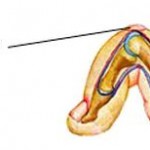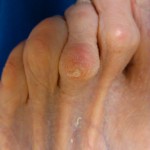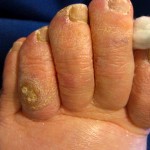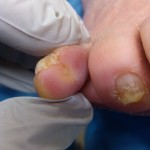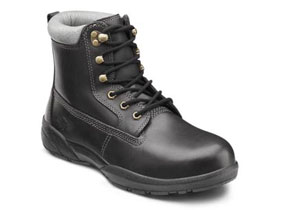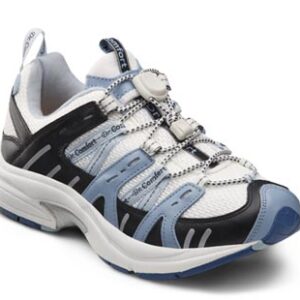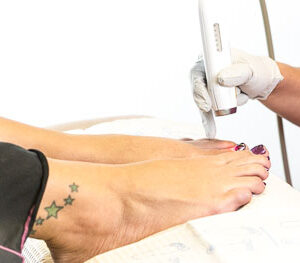Painful Toes
Painful Toes are commonly caused by corns or calluses on toes, they are thickened skin deposits occurring in specific areas in response to pressure and shear force. In most cases, the pressure is caused by ill-fitting shoes, hammertoes, or arthritis. Corns may cause black areas, painful toes, infections, ulcers, and limit walking. If a corn has black spots (blood deposits), they are ulcers. These areas may or may not be painful. In people with diabetes and some other disorders, the nerves may not function properly, people may not have painful toes at all until the corn causes severe build up, an open wound or an infection. There are several different types of corns, they will be broken down into groups based on treatment and location.
Painful Toes and Distal Hard Corns
Distal hard corns form on the tips of toes because of shear force and pressure. The shear force and pressure are caused by a contracture of the toe (hammertoe). When walking and shifting pressure from the rear of the foot to the front of the foot, the tips of the toes are forced into the ground. Distal hard corns are caused by the walking surface and the contracted toe. in most cases shoes have little to no bearing on distal hard corns.
Conservative Treatment of Distal Hard Corns
There are only a few effective conservative treatments for distal hard corns. The most effective conservative treatment is called a crest pad. Crest pads can be made from different materials, bought at totally feet or made by a podiatrist. They function by elevating the tip of the toe by filling the dead space (sulcus) created by the hammertoe. The store bought ones often work, but may need some adjustments. We do not recommend corn “medicine”. These are compounds with a high concentration of salicylic acid, salicylic acid eats skin away, if the medicine gets on healthy skin, it can cause wounds.
Surgical Treatment of Distal Hard Corns
Surgical treatment is the only way to cure these deformities permanently. The corn is a symptom of the hammertoe and the hammertoe is a symptom of an unstable foot. Because the hammertoe is a structural deformity caused by bone, ligament, and tendons, they need to be altered to regain the proper alignment of the toe. This can be done different ways and depends on your podiatrist’s preferences. Typically, the healing time is about 3-4 weeks with hammertoe surgery, assuming there are no complications.
Painful Toes and Dorsal Hard Corns
Dorsal hard corns are most commonly found on the 2nd and 5th toe, however they can occur on any toe. They occur on top of the toe at the 1st toe joint known as the proximal interphalangeal joint (PIPJ). This type of corn is caused by pressure and shear force of a shoe at the joint, therefore this corn is strictly a problem between the hammertoe and the shoe. Shoes that do not have enough height in the toe box will cause pressure across this area resulting in a corn. In some cases the hammer toe is so severe; it is difficult to find shoe to accommodate the deformity.
- Corn on arthritic Joint
- Before Debridement (trimming) of the corn
- After debridement of the corn, notice the cores, this is where the bone communicates with the skin
Conservative Treatment for Dorsal Hard Corns
Dorsal hard corns are caused by hammertoes not fitting in shoes properly. Conservative treatment can be effective in many cases. Conservative treatment options include sensible shoes, open toed shoes, stretching shoes, visco gel sleeves, custom molded digital appliance, cutting holes in shoes, and routine trimming. Visco gel sleeves have been used with some success placed over the toes to absorb the sheer force and cushion the toe. Custom molded devices are used with great success, these are constructed by podiatrist to reduce the pressure from shoe. Open toed sandals without straps across the toes will alleviate the pressure and the corn will go away. In some of my patients with severe deformities an X is cut in the shoe where the pressure is located, this quickly brings relief.
Surgical Treatment for Dorsal Hard Corns
Surgical treatment is the same as it is for distal hard corns, straightening the toe.
Painful Toes and Interdigital Soft Corns
Interdigital soft corns occur between the toes and can occur in any of the interspaces. Usually one corn will form between the toes, however there can be a corn on the adjacent toe (communicating corn) as well. Interdigital corns can be very painful and come on quickly. Most are easy to trim by a skilled podiatrist. Interdigital soft corns are caused by bone spurs, arthritis, or enlarged toe joints creating excessive pressure between the toes. This pressure is exacerbated by tight fitting shoes.
- Soft Corn
- Soft corn
Conservative Treatment for Interdigital Soft Corns
Conservative treatment is straight forward for interdigital soft corns. Putting something soft between the toes will help to alleviate the pressure preventing the corn from forming. There are several different types of toe separators and spreaders made from foam, felt, rubber, and Visco gel, I prefer the visco gel because the last longer and easier to clean. The key is cushioning the pressure and reduceing the shear force, these products work very well.
- Silicone toe separators low profile in place
- Silicone toe separators low profile in place
Surgical Treatment for Interdigital Soft Corns
Surgical treatment is the same as it is for the hammertoes in most cases. In years past Minimal incision surgery was performed by shaving off some of the bone responsible for the pressure. This surgery lost favor for various reasons.



